Through time and wherever we live, the moon always shines in the sky at night. On every continent, the moon illuminates the night sky and connects us with the rest of the world, no matter how far away. Because of this, many civilizations have incorporated this astral body into their religious beliefs and practices. Moon mythology is common, as all over the world the moon exerts its influence on people with different backgrounds. From Artemis to Thoth, we dive into the moon god of different cultures and the bonds that connect them all.
Many of the moon's features are interpreted in the same way among different myths and regions. The similarities often lie in what the moon means, which is often fertility and protection. Although different belief systems may have original myths and stories about the moon, there is always an underlying motive in what exactly the moon stands for. When we take a step back and look through different time periods and places, we see in the similarities with lunar mythology that we are far more alike than we think.
Coyolxauhqui (Aztecs)
The Aztecs occupied what is now central Mexico between 1300 and 1521. They were known to be devoutly religious to their gods and to sacrifice both dead and alive for their religious reasons. The Aztecs worshiped polytheism, with several gods and goddesses to explain nature to the world around them.
Their moon goddess was Coyolxauhqui. Details of Coyolxauhquis' origins are unknown, as different translations tell different stories about how she became known as the moon goddess. The most common myth begins with Coyolxauqui attempting to kill her mother, Coatlicue, the goddess of the earth. Coatlicue became pregnant after a strange circumstance that made her daughter angry. But when Coyolxauqui came to beat down the mother, Coatlicue's unborn child came out of her like a fully armored soldier to defend his mother. This was Huitzilopochtli, the Aztec god of war. With his weapon Xiuhcoatl , a ray of sunshine, he divided the sister into pieces and threw them down the mountain they were fighting on. However, his head rose to the sky and became the moon.
Coyolxauhquis meaning
Due to translation issues, Coyolxauhquis' official deity is confused. Some sources point to her instead of being a goddess of the Milky Way and not the moon. However, with her death leading to the creation of the moon, she no doubt contributes enough to be considered a moon goddess. Coyolxauhquis' brother also killed her with a leaf made of sunlight. Scientists speculate that her death from the sun's rays demonstrates the constant battle between the moon and the sun. Her sacrifice shows that the sun will always come again to wipe the moon from the sky every morning. The Aztecs used this myth as a warning to their enemies, promising that if anyone crossed them, they would end up as Coyolxauhqui- in several pieces.
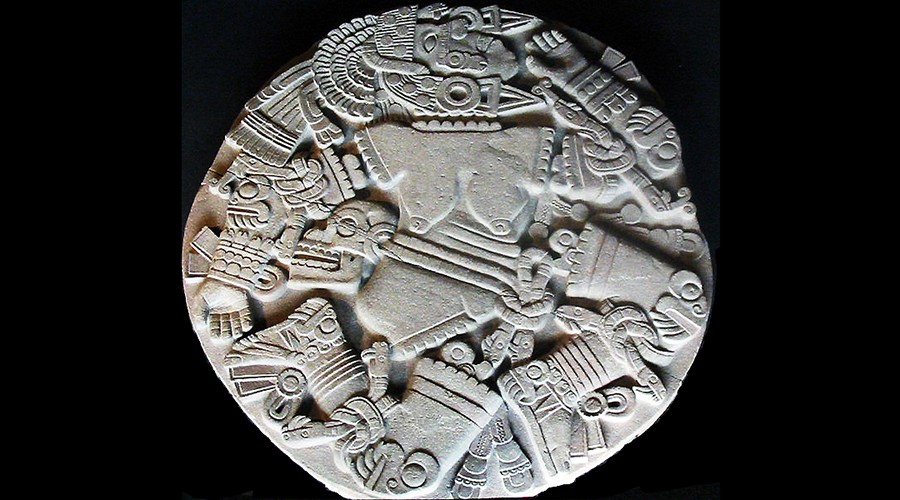
Artemis (Ancient Greece)
The period when ancient Greece grew strong was between 1200 BCE and 323 BCE. Like the Aztecs, the inhabitants of ancient Greece worshiped polytheism, but where the Aztecs had more cruel and violent gods, the Greeks focused on 'why' in their own lives. They strived for an explanation of why things worked the way they did.
The ancient Greek goddess of the moon is Artemis. Her position to be the moon goddess is first and foremost in relation to her twin brother Apollo, the God of the Sun. Her position not only acts as a goddess of the moon, but she also stands for hunting and chastity. Not much of Artemis stands on its own; instead, she often walks behind Apollo, acting as a balance between moon and sun through mythology. Compared to the battle between the sun and the moon in Aztec mythology, the two celestial bodies are connected as an equilibrium in ancient Greek mythology.
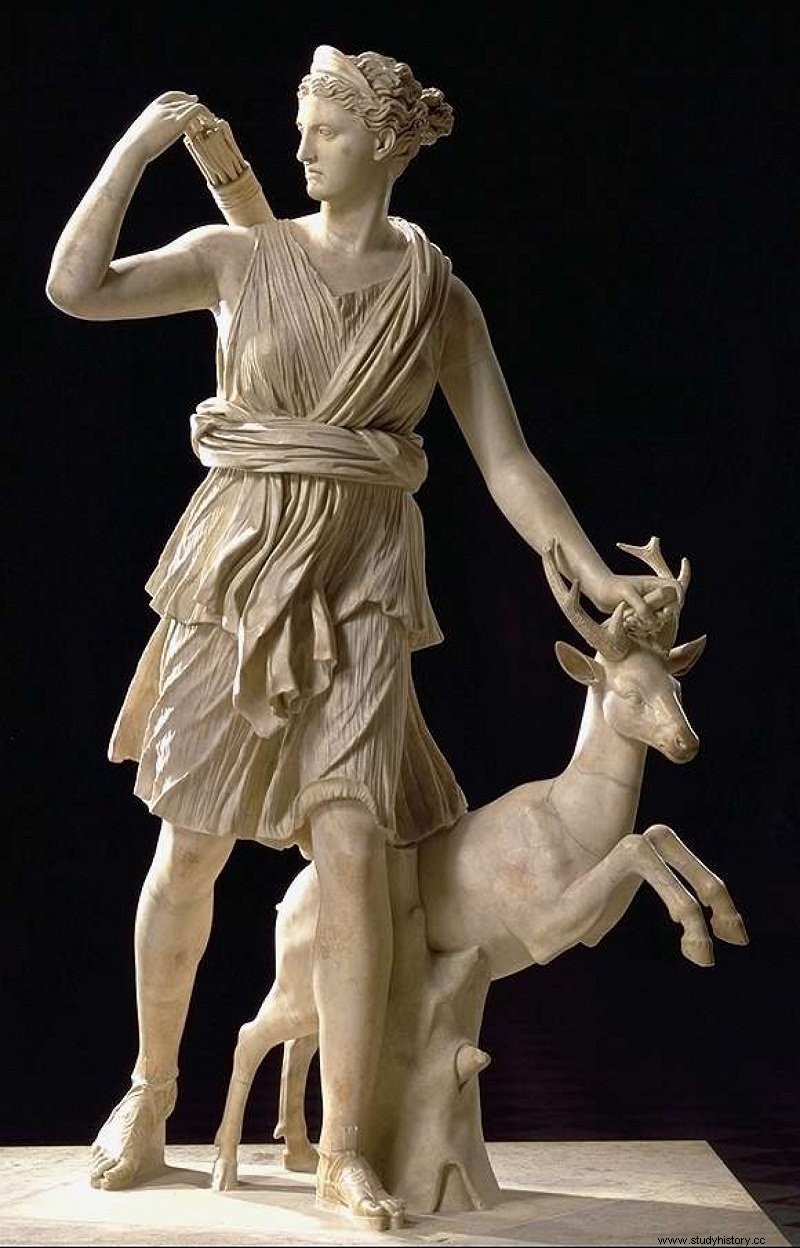
The Moon Goddess and her chastity
As the sun represented masculinity, the moon reflected more feminine virtues, such as chastity and child rearing. So Artemis also represented several of these beliefs. Although she had just been born a little earlier, Artemis ended up helping to give birth during Apollo's birth, which myths claim is her reason for being so protective and caring towards children, as well as her brother and those who cannot protect themselves. self. As a child, Artemis begged her father Zeus to keep her chastity forever. He succeeded and Artemis quickly became one of the gods who protected virgins and young children. Many of her myths were about chasing down men who tried to corrupt young virgins or men who tried unjust acts. Many men coveted Artemis because of her chastity, but only one man, the hunter Orion, ever won her heart.
Chandra (Hindu)
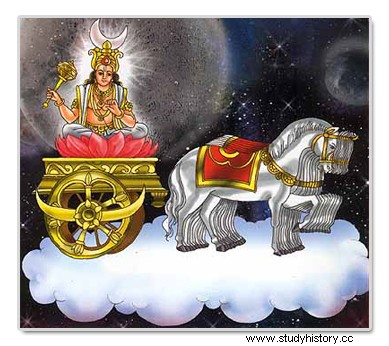
Chandra originates from Hinduism, which is the longest religion in the world at present. The lunar mythology of Hinduism is not as prominent as it once was, but Chandra is still a well-known figure. While Chandra presents herself as a male figure, like Artemis, he also represents feminine points, such as fertility and birth. But Chandra's fertility represents the energy of the world, not just physical birth. They believe that Chandra can provide life energy, and even create new life from her powers. He is depicted riding a chariot drawn by horses or an antelope across the sky while holding a Lotus flower. Chandra's myths are not as common as other gods in Hinduism, but he is still a prominent figure to many.
Chandra and the phases of the moon
Hinduism attributes Chandra's role in creating the phases of the moon. Chandra releases her energy to the world around him, and when they take his energy, he loses himself. The moon shrinks when Chandra gives more of her energy away. When the energy is drained by itself when the moon becomes a crescent, co-ruler Chandi starts the same cycle until he gets enough energy to give to others. This reasoning can be noted in the growing and waning phase of the moon, as Chandra represents one and Chandi represents the other. People who practice Hinduism often worship Chandra and believe that he can alleviate grief and mental turmoil.
Thoth (Ancient Egypt)
From 3100 BC. to 332 BC. worshiped the ancient Egyptians Thoth, who was not only the god of the moon but also mathematics, science and sacred texts. Thoth appeared most like a bird or a baboon. While the other religions we have seen have more human adaptation of their gods, the Egyptians often perceived that their gods were half-human, half-animal or completely animal. Thoth's Egyptian name translates specifically to "He who is like Ibis" (Djehuty). Thoth worked as a heavenly deity who exchanged with the sun guard when night came. It is also said that he created writing, the calendar and even controlled space and time in addition to the lunar duty.
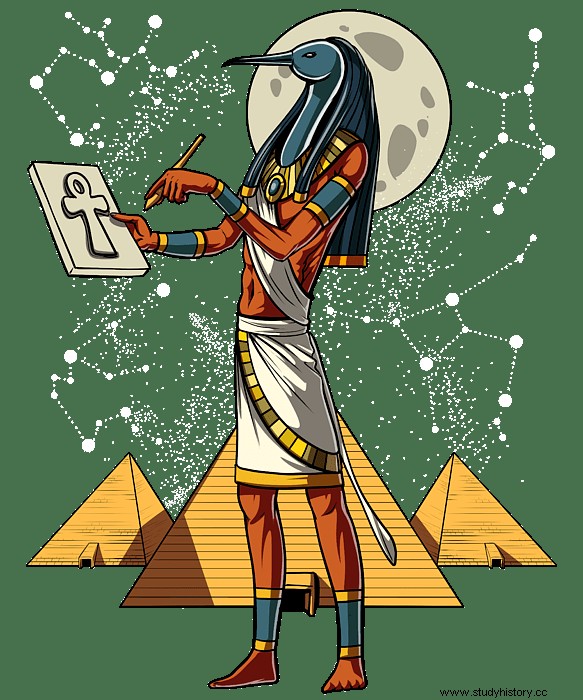
Thoth and his impact on the afterlife
In ancient Egypt, death and the afterlife grew prominently in religion. To enter the afterlife, your soul had to be pure and pure and weigh no more than the feathers of truth. For this important practice, Thoth acted as an accountant and kept track of who came into the afterlife and who did not. Thoth also acted as a record holder for the other gods, noting complaints and problems that arose between them. He worked as a peacekeeper to keep things organized and run smoothly and wanted to convene meetings to discuss new ideas and issues. Thoth spoke strongly about justice and divine order.
Tu'er Ye (China)
Tu'er Ye comes from a small folk religion that comes from Beijing, China. He appears as a white rabbit with glowing eyes dressed in a traditional priestly attire. Also known as the rabbit god, Tu'er Ye lived on the moon with other moon gods and came down to earth to help the people when they needed him. The rabbit god is popular even in today's culture, as the inhabitants celebrate him through crafts, toys and decor during the autumn festival every autumn. Citizens love Tu'er Ye so much that they even created a spouse for the Hankan goddess was meant to be his.
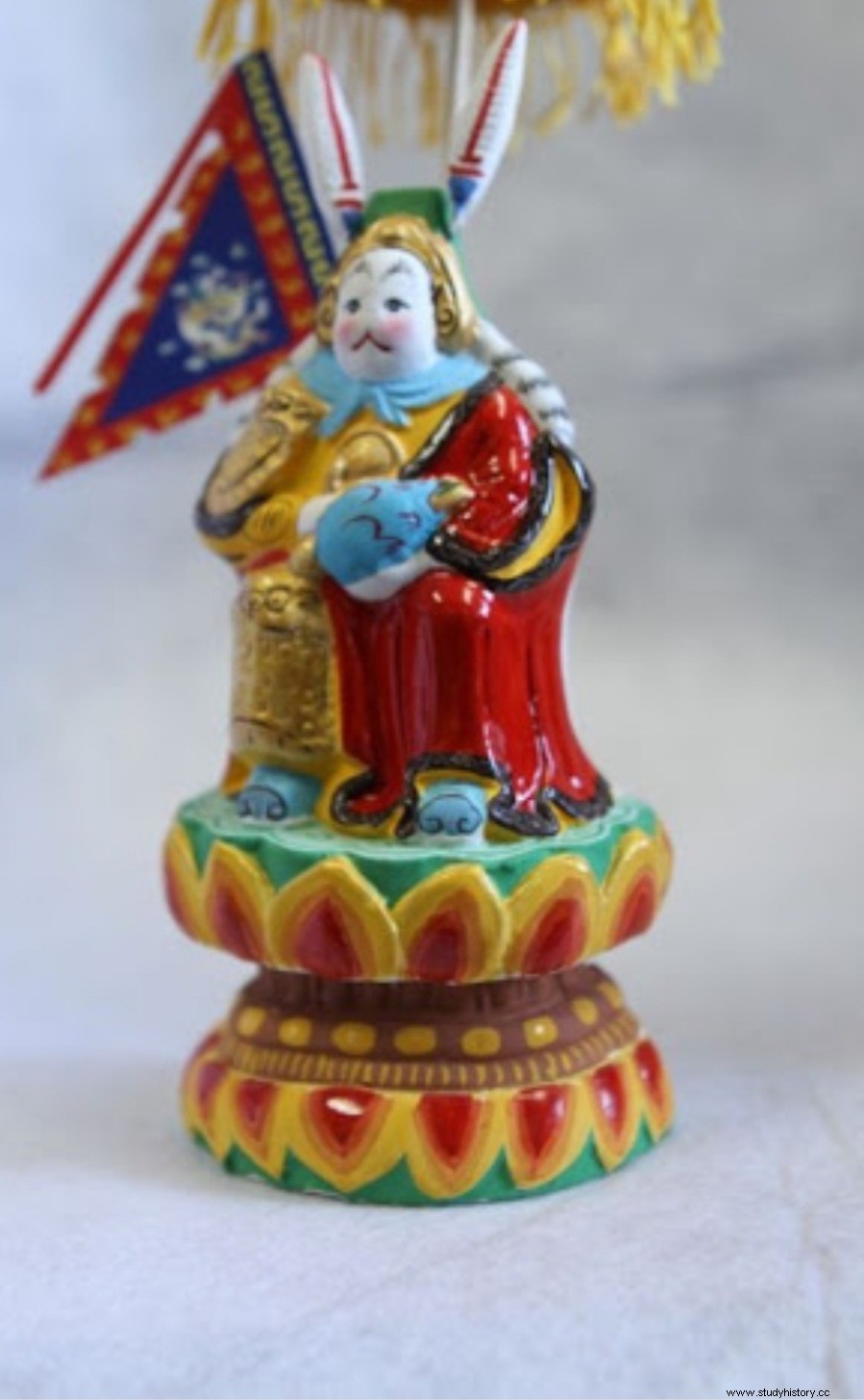
How Tu'er Ye Came to Earth:The Moon Mythology on Chinese Folklore
The rabbit god lived on the moon and took care of all the people of the earth with the other moon gods. However, a plague struck the world, so Tu's went ashore to help and try to heal the painful people. But the rabbit's fur color - white - had a connection with death during this period, so people feared Tu'er Ye and thought he would bring more misfortune. The rabbit god took up this superstition and borrowed clothes from a temple to wear saints' clothes. When he wore the new clothes, this moon mythology figure found that he could now enter the homes of sick people and heal them of their plagues.
Mania:Moon god for Norse mythology
Hands are the moon god in Norse mythology, which began in the XNUMX century. He is a male god who, like Artemis, represents the relationship between the sun and the moon with his sister Sol. Mani's name is translated directly to the word "moon", while her name is translated directly to the word sun. Together, Mani and Sol's job is to help people keep track of dates and times, especially when it comes to harvesting. Mania is not the focus of worship and instead falls behind and in accordance with his sister, who leads most of their myths together. This moon god is not seen as the moon itself, but as a guide for the body, which drives it across the sky in its chariot drawn by horses.
Mania and its myths
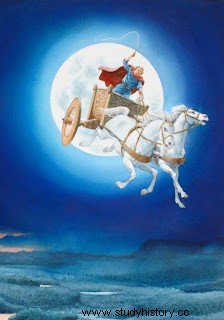
Ragnarok refers to the end of the world in Norse mythology, where all the gods fight to the death against monsters that tear the world apart. In Mani's battle, he and his sister are both pursued by wolves, who thirst for their blood across the sky. Unfortunately, these wolves hunted them before Ragnarok; they prayed the cycle day and night. As Mani fled from a wolf out of the sky, the sister flew in. Mani also played the lead role in a few epics written by Vikings, where he and his family helped create the cosmos. Like Artemis, Mani also protects and guards vulnerable children. According to myth, he has two child assistants who are the origin of the always famous nursery rhyme Jack and Jill.
Tsukuyomi-no-Mikoto (Shinto religion (Japan))
Tsukuyomi-no-Mikoto, otherwise known as just Tsukuyomi, was the moon god of the Shinto religion in Japan. This moon god was one of the only male moon gods at that time, as the moon is generally perceived as having feminine virtues. Tsukuyomi's name roughly translates to moon-reading man, which is the only way scientists were able to determine his gender. Not much is known about Tsukuyomi as well as a few myths of origin, which leaves his backstory hidden.
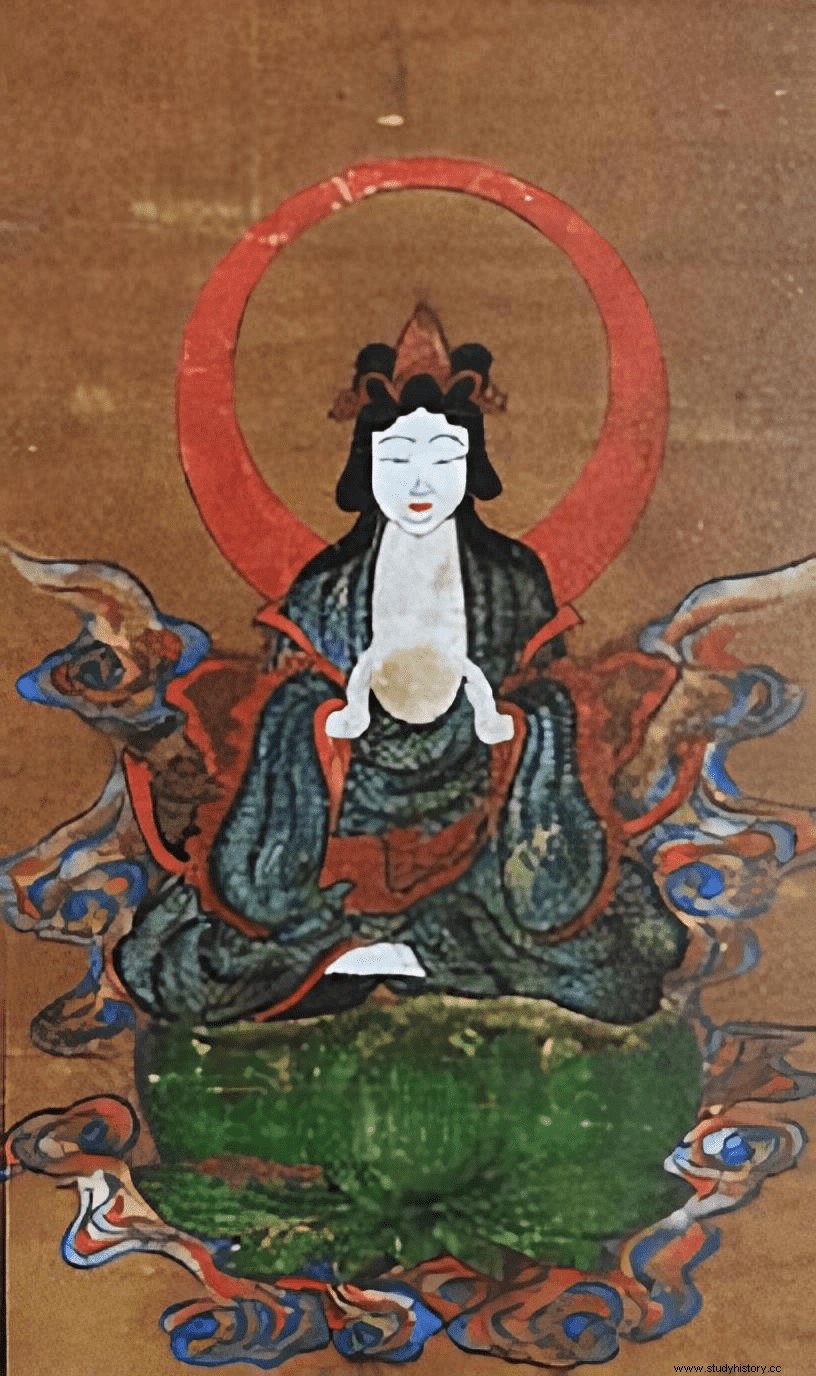
The story of the moon and the sun according to Tsukuyomi
According to the Shinto myth, Tsukoyomi's wife was also her sister Amaterasu, the sun goddess. After being invited to the food god's party, his sister-in-law could not attend and asked him to take her place. Tsukuyomi agreed. But he despised the cooking god's preparation and killed her by sight. This made his wife angry, so she threw him away from the relationship. Tsukuyomi became a type of evil figure and sought to win back his wife. However, she was too fast, and every time he caught her in the sky, she disappeared. This myth explains the cycle of day and night, and how Tsukuyomi will never be able to be reunited with his wife.
Conclusion:The connections our moon makes
Moon mythology is found all over the world. And despite the differences between these cultures and religions, we can find many similarities. From the past to the present, lunar mythology connects the years. The moon most often stands for ideas such as fertility, growth, protection and energy, all of which are positive associations. The position of this celestial body in lunar mythology also has other functions, such as acting as a balance against the sun gods and the moon shining over us all, so we take what we can from it, and so knowledge can be found in the strangeness of human history. After all, we are only human, and we dare to put our dreams in the sky among the stars.
